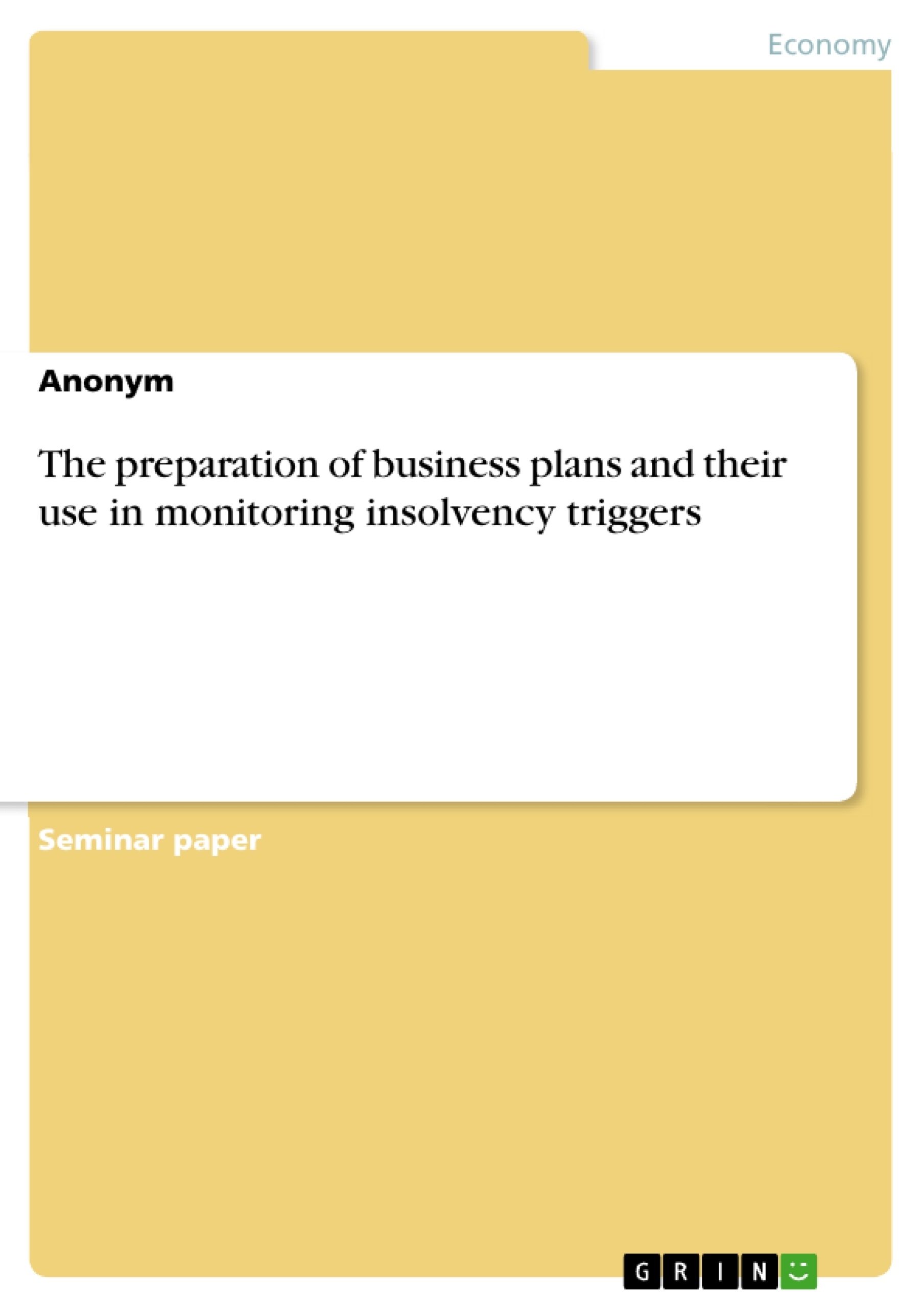How are business plans used and integrated in grown businesses to effectively support top management decision-making in terms of monitoring for insolvency triggers? To answer this question, the paper starts defining relevant terms and the conceptual background referring to management information systems, business planning and corporate insolvency. Afterwards, it captures how business plans should be tailored according to the top management’s needs based on the management information system. Ultimately, the paper’s target is to show the implications of business planning and critically discuss how business plans can support the top management in establishing the financial plan required for monitoring insolvency triggers.
Inhaltsverzeichnis (Table of Contents)
- 1 Introduction
- 2 Definitions and conceptual background
- 2.1 Definition and delimitation of management information systems
- 2.2 Definition and delimitation of business planning
- 2.3 Basic structure and chosen sections of business plans
- 2.4 Definition and delimitation of insolvency
- 2.5 Triggers to open insolvency proceedings
- 3 Implications for monitoring insolvency triggers using business plans
- 3.1 Chosen reasons for corporate insolvencies
- 3.2 Management information systems as a first source
- 3.3 Tailoring of business plans and relevance of financial planning
- 3.4 Monitoring insolvency triggers using financial planning elements
- 3.4.1 Control for illiquidity
- 3.4.2 Control for overindebtedness
- 3.4.3 Control for imminent illiquidity
- 3.5 Need for integrated financial planning as best practice
- 4 Conclusion
Zielsetzung und Themenschwerpunkte (Objectives and Key Themes)
This seminar paper aims to examine the potential of business plans as a tool for monitoring insolvency triggers. It explores how business plans can provide insights into a company's financial health and identify early warning signs of potential insolvency.
- The role of management information systems in identifying insolvency risks.
- The relevance of financial planning in business plans for insolvency monitoring.
- Specific elements within financial planning that can be used to monitor insolvency triggers.
- The need for integrated financial planning as a best practice for preventing insolvency.
- The importance of utilizing business plans as a proactive tool for insolvency risk management.
Zusammenfassung der Kapitel (Chapter Summaries)
- Chapter 1: Introduction: This chapter provides an overview of the topic and the research question. It sets the context for the subsequent chapters by defining key terms and outlining the scope of the paper.
- Chapter 2: Definitions and Conceptual Background: This chapter defines and clarifies the core concepts relevant to the research. It covers management information systems, business planning, insolvency, and the triggers for insolvency proceedings. It further delves into the structure of business plans and identifies relevant sections for monitoring insolvency triggers.
- Chapter 3: Implications for Monitoring Insolvency Triggers Using Business Plans: This chapter explores the implications of using business plans for monitoring insolvency triggers. It discusses the reasons behind corporate insolvencies, the role of management information systems, and the significance of financial planning in detecting potential risks. This chapter focuses on specific financial planning elements that can be used to monitor insolvency triggers, such as controls for illiquidity, overindebtedness, and imminent illiquidity.
Schlüsselwörter (Keywords)
The main keywords and focus topics of this seminar paper include business plans, insolvency monitoring, management information systems, financial planning, illiquidity, overindebtedness, imminent illiquidity, and best practices for preventing insolvency.
- Citar trabajo
- Anonym (Autor), 2017, The preparation of business plans and their use in monitoring insolvency triggers, Múnich, GRIN Verlag, https://www.grin.com/document/421068



